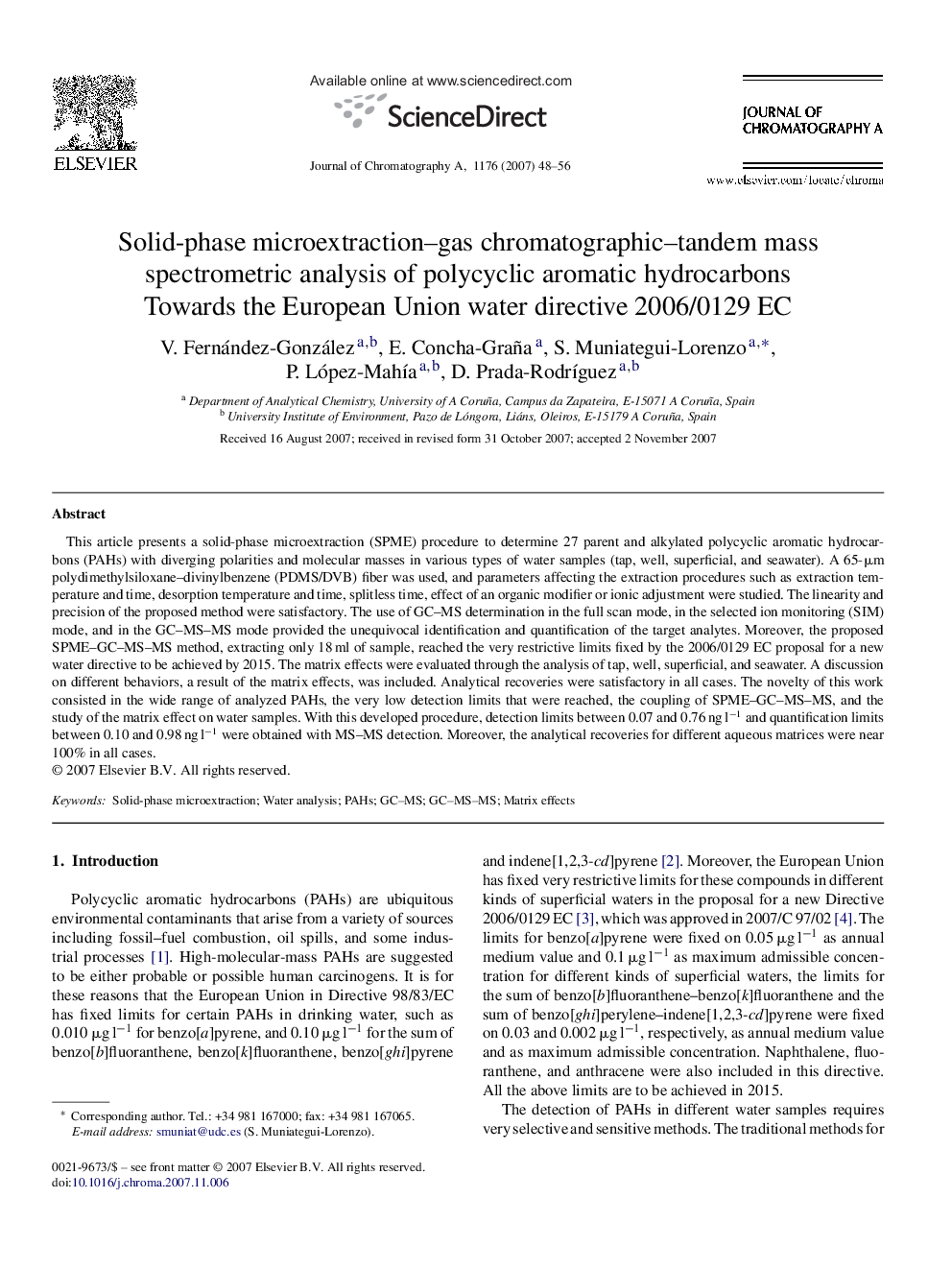| Article ID | Journal | Published Year | Pages | File Type |
|---|---|---|---|---|
| 1206052 | Journal of Chromatography A | 2007 | 9 Pages |
This article presents a solid-phase microextraction (SPME) procedure to determine 27 parent and alkylated polycyclic aromatic hydrocarbons (PAHs) with diverging polarities and molecular masses in various types of water samples (tap, well, superficial, and seawater). A 65-μm polydimethylsiloxane–divinylbenzene (PDMS/DVB) fiber was used, and parameters affecting the extraction procedures such as extraction temperature and time, desorption temperature and time, splitless time, effect of an organic modifier or ionic adjustment were studied. The linearity and precision of the proposed method were satisfactory. The use of GC–MS determination in the full scan mode, in the selected ion monitoring (SIM) mode, and in the GC–MS–MS mode provided the unequivocal identification and quantification of the target analytes. Moreover, the proposed SPME–GC–MS–MS method, extracting only 18 ml of sample, reached the very restrictive limits fixed by the 2006/0129 EC proposal for a new water directive to be achieved by 2015. The matrix effects were evaluated through the analysis of tap, well, superficial, and seawater. A discussion on different behaviors, a result of the matrix effects, was included. Analytical recoveries were satisfactory in all cases. The novelty of this work consisted in the wide range of analyzed PAHs, the very low detection limits that were reached, the coupling of SPME–GC–MS–MS, and the study of the matrix effect on water samples. With this developed procedure, detection limits between 0.07 and 0.76 ng l−1 and quantification limits between 0.10 and 0.98 ng l−1 were obtained with MS–MS detection. Moreover, the analytical recoveries for different aqueous matrices were near 100% in all cases.
